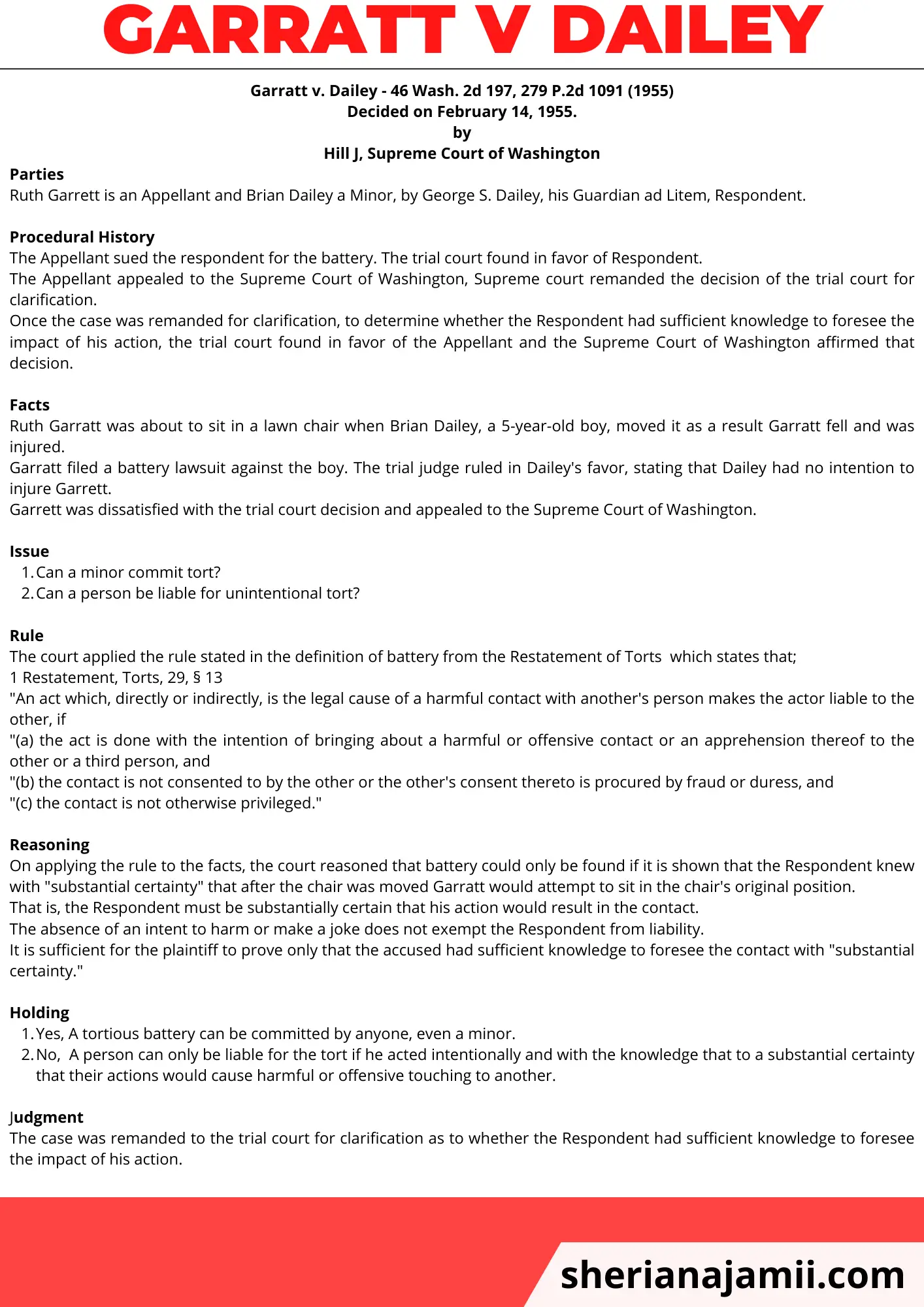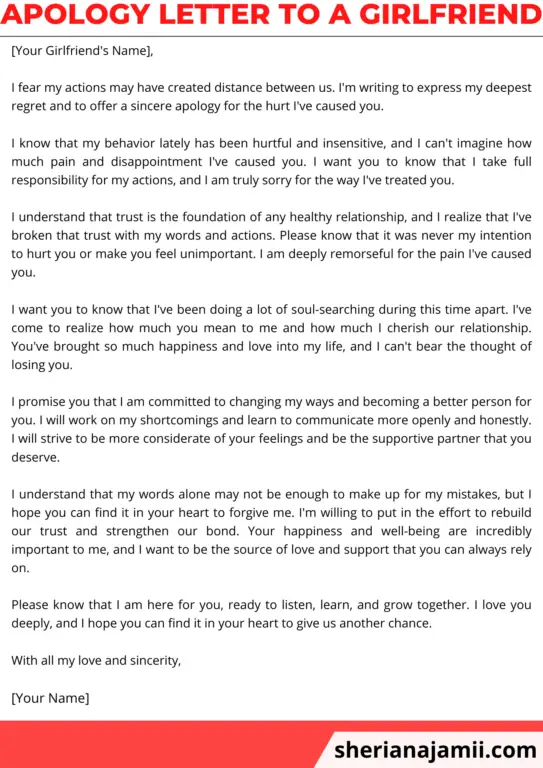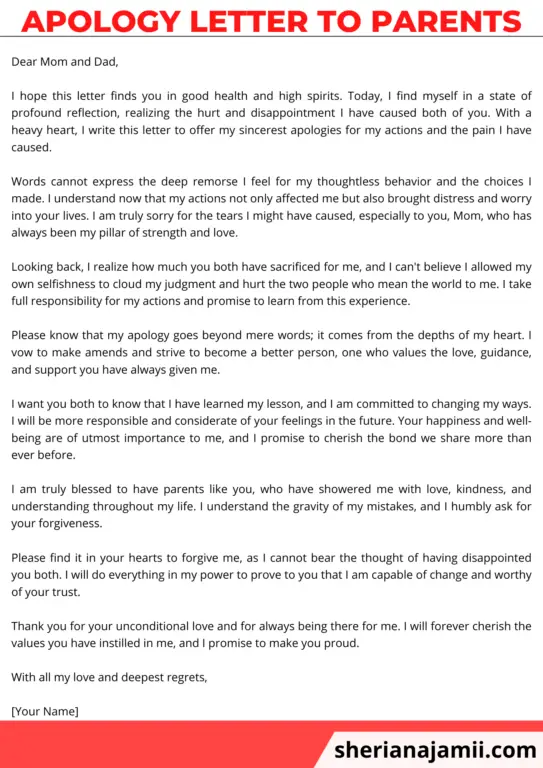Here you will see the Garratt v Dailey case brief.
Garratt v Dailey case is a well-known American tort law case that demonstrates the “intent” principle for intentional torts.
Garratt v Dailey case further clarifies that a five-year-old child can be held personally liable for intentional torts.
Here I will share with you the Garratt v Dailey case brief to help you understand everything you need to know about the Garratt v Dailey case in a simple and accurate way.
Interested in learning how to write your own case brief? learn here or you may check these case brief templates.
Let’s get started
Jump to section
Garratt v Dailey case brief
Garratt v. Dailey – 46 Wash. 2d 197, 279 P.2d 1091 (1955)
Decided on February 14, 1955.
by
Hill J, Supreme Court of Washington
Parties
Ruth Garratt is an Appellant and Brian Dailey a Minor, by George S. Dailey, his Guardian ad Litem, Respondent.
Procedural History
The Appellant sued the respondent for the battery. The trial court found in favor of Respondent.
The Appellant appealed to the Supreme Court of Washington, Supreme court remanded the decision of the trial court for clarification.
NB: Once the case was remanded for clarification, to determine whether the Respondent had sufficient knowledge to foresee the impact of his action, the trial court found in favor of the Appellant and the Supreme Court of Washington affirmed that decision.
Facts
Ruth Garratt was about to sit in a lawn chair when Brian Dailey, a 5-year-old boy, moved it as a result Garratt fell and was injured.
Garratt filed a battery lawsuit against the boy. The trial judge ruled in Dailey’s favor, stating that Dailey had no intention to injure Garratt.
Garratt was dissatisfied with the trial court decision and appealed to the Supreme Court of Washington.
Issue
- Can a minor commit tort?
- Can a person be liable for unintentional tort?
Rule
The court applied the rule stated in the definition of battery from the Restatement of Torts[mfn]The American Restatement of Torts, Second, is a treatise issued by the American Law Institute. It summarizes the general principles of common law United States tort law. The volumes covering torts are part of the second Restatements of the Law series.[/mfn] which states that;
1 Restatement, Torts, 29, § 13
“An act which, directly or indirectly, is the legal cause of a harmful contact with another’s person makes the actor liable to the other, if
“(a) the act is done with the intention of bringing about a harmful or offensive contact or an apprehension thereof to the other or a third person, and
“(b) the contact is not consented to by the other or the other’s consent thereto is procured by fraud or duress, and
“(c) the contact is not otherwise privileged.”
Reasoning
On applying the rule to the facts, the court reasoned that battery could only be found if it is shown that the Respondent knew with “substantial certainty” that after the chair was moved Garratt would attempt to sit in the chair’s original position.
That is, the Respondent must be substantially certain that his action would result in the contact.
The absence of an intent to harm or make a joke does not exempt the Respondent from liability.
It is sufficient for the plaintiff to prove only that the accused had sufficient knowledge to foresee the contact with “substantial certainty.”
Holding
- Yes, A tortious battery can be committed by anyone, even a minor.
- No, A person can only be liable for the tort if he acted intentionally and with the knowledge that to a substantial certainty that their actions would cause harmful or offensive touching to another.
Judgment
The case was remanded to the trial court for clarification as to whether the Respondent had sufficient knowledge to foresee the impact of his action.
read the full text here
other case briefs to read
- Marbury versus Madison case brief
- Hamer v Sidway case brief
- Pennoyer v Neff case brief
- Pierson v Post case brief
- Hawkins v Mcgee case brief
- Lucy v Zehmer case brief
- Hadley v Baxendale case brief
- Tinker v des Moines case brief
- Duncan v Louisiana case brief
- Brown v Board of education case brief
- Griswold v Connecticut case brief
- Katz v United States case brief
- Riley v California case brief | United States v. Wurie
- Leonard v Pepsico case brief
- Wickard v Filburn case brief
- District of Columbia v. Heller case brief
- Gonzales v Raich case brief
- Shelley v Kraemer case brief




